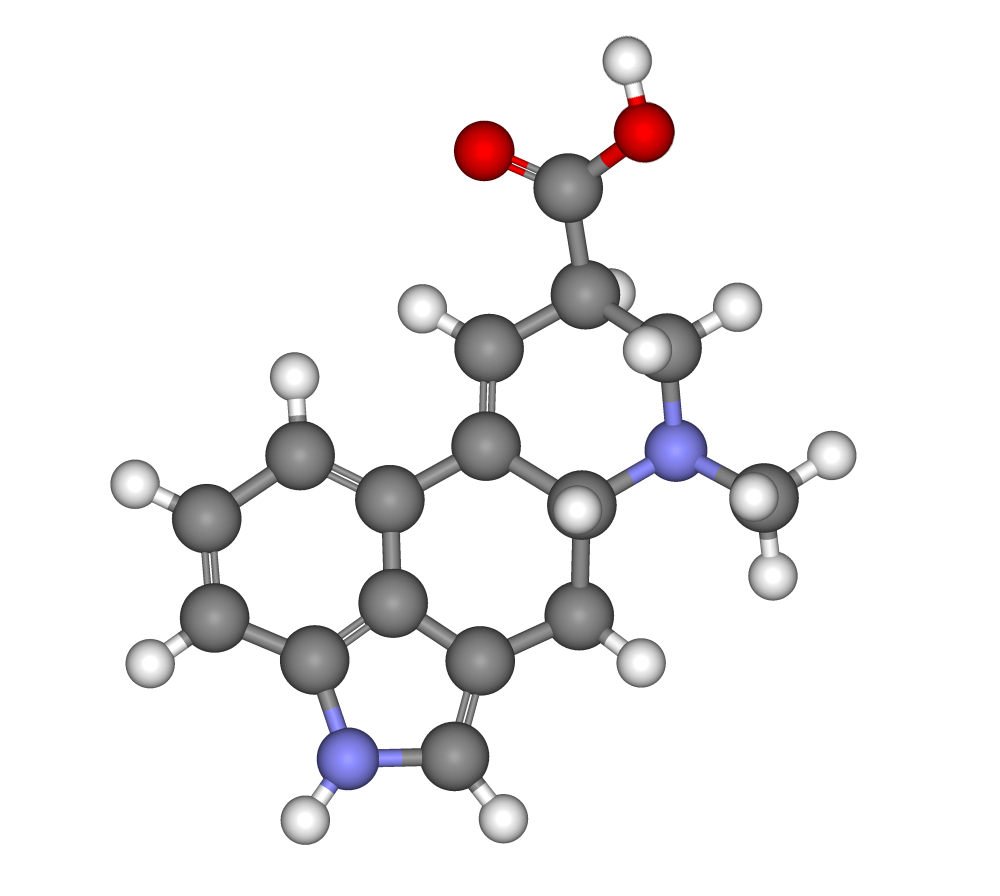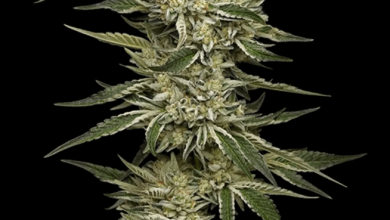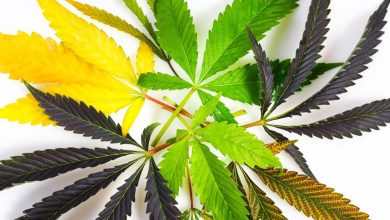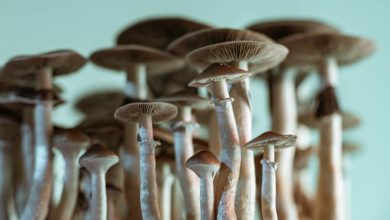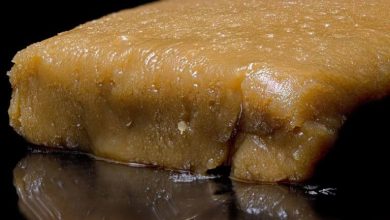A fungus hidden in bluebell seeds and its connection to LSD- Alchimia Grow Shop
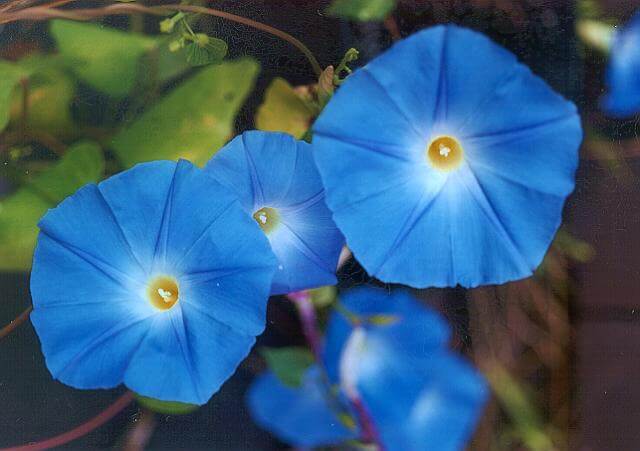
In a lab at West Virginia University (WVU), environmental microbiology student Corinne Hazel made a discovery that has captured the scientific attention: an elusive fungus, dubbed Periglandula clandestina, that lives in symbiosis with the seeds of the morning glory ( Ipomoea tricolor ). This discovery not only solves a mystery that has intrigued scientists for almost a century but also connects to the fascinating story of Swiss chemist Albert Hofmann, the creator of LSD, and the ancient use of these seeds in ethnobotanical practices. In this article, we will explore this discovery, its relationship to LSD, the role of these flowers in history, and the possible implications for modern science, including the growing interest in microdosing.
Join us on this journey into the world of fungi and plants!
A fortuitous discovery with deep roots
Imagine a lab full of morning glory plants, with their vibrant blue flowers and tiny seeds. Corinne Hazel was studying how these plants disperse protective chemicals called ergot alkaloids through their roots. While examining the seeds, she noticed something curious: a bit of “fuzz” on the seed coats. “We had a bunch of plants lying around and these little seed coats,” Hazel said. “We noticed a little bit of fuzz on the coat. That was our mushroom!”
That “fuzz” turned out to be Periglandula clandestina, an endophytic fungus that lives inside the seeds of the morning glory in a symbiotic relationship. Hazel, working alongside Professor Daniel Panaccione, extracted a DNA sample from the fungus and sent it for genomic sequencing. The results confirmed it was a new species, and the genetic sequence now bears Hazel’s name in a gene bank. “Sequencing a genome is a significant thing,” Panaccione said. “It’s incredible for a student.”
This fungus is no ordinary discovery. For decades, scientists suspected that a fungal organism was responsible for the psychedelic compounds present in morning glory seeds, but no one had been able to identify it. Hazel and Panaccione finally solved this mystery, publishing their findings in the journal Mycologia (DOI: 10.1080/00275514.2025.2483634).

The connection with Albert Hofmann and LSD
The story of Periglandula clandestina is intertwined with that of Swiss chemist Albert Hofmann, who in the 1930s synthesized LSD (from the German “Lysergsäurediethylamid” – lysergic acid diethylamide) from ergot alkaloids produced by the fungus Claviceps purpurea, which grows on grains such as rye. Hofmann noticed that bellflower seeds, particularly those of the species Ipomoea tricolor, contained compounds similar to those he had modified to create LSD, such as ergine (Lysergsäureamid amide or LSA). Intrigued by the traditional use of these seeds in Mesoamerican ceremonies, Hofmann hypothesized that a symbiotic fungus within the bells might be producing these psychedelic compounds. However, despite his efforts, he never found the mushroom in question.
Hofmann wasn’t wrong. Bellflower seeds contain derivatives of lysergic acid, which gives them their psychedelic properties. “This inspired Hofmann and others to investigate bellflowers for a hidden fungus related to the ergot fungus that could be the source of these chemicals,” Panaccione explained. “They found very similar chemicals, but they were never able to find the mushroom itself.” Hazel’s identification of Periglandula clandestina confirms Hofmann’s theory, showing that this fungus is, in fact, responsible for producing the ergot alkaloids in bellflower seeds.
LSD or lysergic acid diethylamide is, without a doubt, one of the most well-known hallucinogenic substances in the world. But did you know that LSD comes from a fungus that affects cereal crops? Well, today we will tell you everything about ergot, how it is converted into LSD and what its main effects on the body are.
An ethnobotanical journey into the past
Bells aren’t just decorative plants; they have a rich ethnobotanical history dating back centuries. Mesoamerican peoples, such as the Aztecs, were familiar with the psychedelic properties of the seeds of the Ipomoea tricolor plant, which they called tlitliltzin or ololiuhqui. Similar to magic mushrooms, these seeds were used in spiritual and medicinal rituals, considered sacred for their ability to induce visions and altered states of consciousness. Shamans used them to communicate with the divine, heal illnesses, or explore the spirit world.
The knowledge of these properties did not go unnoticed by Hofmann, who studied the traditional uses of bells to better understand the chemical compounds they contained. The connection between ancestral use and modern science is fascinating: what indigenous peoples knew intuitively, science now confirms with the discovery of Periglandula clandestina. This mushroom, hidden in seeds, is the engine behind the psychedelic effects that have intrigued ancient and modern cultures alike.
What are ergot alkaloids and why are they important?
Ergot alkaloids are chemical compounds produced exclusively by fungi, such as Periglandula clandestina and Claviceps purpurea. These compounds have a double face: in high doses, they can be toxic to humans and animals, causing a condition known as ergotism, which historically led to severe symptoms such as seizures, hallucinations, and even gangrene. However, in controlled doses or with their molecular structures modified (derivatives), ergot alkaloids have therapeutic applications. Currently, they are used in medications to treat migraines, uterine bleeding, dementia, and Parkinson’s disease.
Microdosing and morning glory seeds
In recent years, microdosing —the consumption of very small doses of psychedelic substances to enhance creativity, focus, or well-being without inducing hallucinations —has gained popularity. While microdosing with LSD or psilocybin (from psychedelic mushrooms) is more common, morning glory seeds, rich in LSA, have also been used by some enthusiasts. LSA has milder effects than LSD, but can induce states of relaxation and insight at low doses.
However, using morning glory seeds for microdosing is not without risks: ergot alkaloids can cause side effects such as nausea, vasoconstriction, or dizziness if not dosed correctly. Furthermore, seed preparation requires care, as some commercial varieties are treated with toxic chemicals.
The mystery of an endophyte: The secret life of Periglandula clandestina

What makes Periglandula clandestina so fascinating is its nature as an endophyte, an organism that lives harmlessly inside another, in a symbiotic relationship. In this case, the fungus resides in the seeds of the morning glory, producing alkaloids that protect the plant from herbivores and disease. In return, the plant provides a safe home for the fungus. This relationship is a perfect example of how nature creates complex alliances for survival.
The name “clandestina” couldn’t be more appropriate. This fungus managed to evade scientists for decades, hidden in tiny seed coats. Hazel is now working on cultivating this slow-growing fungus in the lab, a crucial step toward studying its properties and potential applications.
A discovery that opens the door to future research
The story of Periglandula clandestina is more than a scientific discovery; it’s a bridge between the past and the future. It connects the ancestral knowledge of Mesoamerican peoples with the curiosity of Albert Hofmann and the perseverance of a student like Corinne Hazel. The discovery of Periglandula clandestina opens the door to exploring other species of morning glory, which could host other symbiotic fungi with unique compounds yet to be discovered.
In a world where psychedelic research is resurfacing, this discovery is a reminder that answers to big scientific questions are often hidden in the most unexpected places. From Mesoamerican ceremonies to modern laboratories, morning glory seeds and their hidden mushroom invite us to continue exploring the intersection of nature, science, and mental health.
References:
